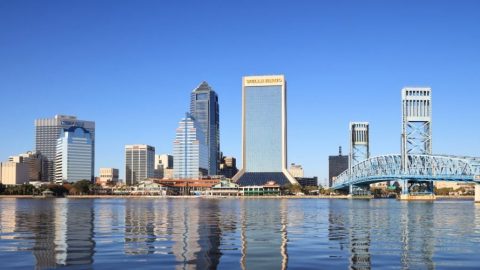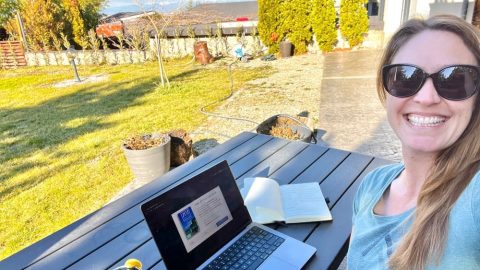(CNN) — The space tourism race is now firing on all rockets, but one company is hoping to carve out a niche as “the only carbon-neutral, zero-emission way” to travel to the edge of space.
Florida-based Space Perspective plans to take passengers up to 100,000 feet for suborbital adventures in a pressurized capsule suspended from an enormous high-tech version of a hot-air balloon. New images released July 27 show the latest patented capsule design for its Spaceship Neptune craft.
It’s a roomier interior than in previous iterations, with a spherical capsule design affording travelers more head height, as well as adding the safety benefit of being optimal for pressure resistance. And we get a better look at the luxury Space Lounge, with its deep reclining seats, mood lighting and well-stocked bar.
Reflective coated windows, similar to an astronaut’s helmet, are in place to help keep temperatures comfortable, while a new thermal control system is patent-pending.
Space Perspective worked on this fresh design with London-based studio Of My Imagination (OMI). The 360-degree panoramic views afforded by what Space Perspective describes as “the largest ever, patented windows to be taken to the edge of the space” were — in a satisfying example of nominative determinism — developed by Spaceship Neptune’s experience design lead Dan Window, along with experienced designer Isabella Trani.
Other improvements include a patent-pending splash cone for a smooth and safe water landing at sea.
And in terms of scale, the company compares the capsule to the size of “a large balcony stateroom on a cruise ship,” while the balloon is some 18,000,000 cubic feet when fully expanded — so big enough for a football stadium to float inside it.
$125,000 ticket
As it doesn’t leave Earth’s gravity, no specialist training will be required and travelers will be able to walk around the capsule environment. The company claims the boarding process will be as simple as that of an airplane.
The trips will involve a two-hour gentle ascent above 99% of the Earth’s atmosphere. There’ll then be another leisurely two hours for passengers to enjoy the views from the cabin before the spaceship makes its two-hour descent to the ocean. Voyage to shore will be completed by ship.
There’ll be Wi-Fi on board so travelers can livestream their experience for the folks back home and there’ll be on-board cameras documenting all the action too. Satellite imagery and the 360-degree cameras will also make it possible to zoom in and out of the epic vista.
The price tag, unsurprisingly, is not cheap. Tickets cost a once-in-a-lifetime $125,000 per person, but Space Perspective says it’s already sold nearly 900 of them. They’re now taking bookings for 2025 and beyond, with the $1,000 deposit being fully refundable should this particular space bubble pop. Customers can also pay via crypto-currency, which should appeal to the crossover of spendy consumers who’re not risk-averse.
Hydrogen-powered
Space Perspective’s co-founders Jane Poynter and Taber MacCallum previously designed the air, food and water systems for the Biosphere 2 space base, in which they lived for two years.
The company’s zero-emissions claims rest on the fact that rather than using high-energy rockets to jet off to space, its craft defies gravity through buoyancy.
As helium is in limited supply and needed for critical medical applications, Spaceship Neptune uses hydrogen. “The lift gas inside the balloon is lighter than air and allows Neptune to float on top of the Earth’s atmosphere like an ice cube on water,” says Space Perspective.
The spaceship is all reusable, except for the material which makes up the skin of the balloon — this will be retrieved by the team at the end of each flight and recycled.
“Centuries of balloon and parachute operation and development demonstrate that always flying with the balloon from launch through landing, with traditional parachutes as a reserve backup system, is by far the simplest, safest and most robust solution,” said MacCallum in a statement. Our proprietary flight system means that the capsule and SpaceBalloon always remain connected, and take-off and landing conditions are always within our control.”






Recent Comments